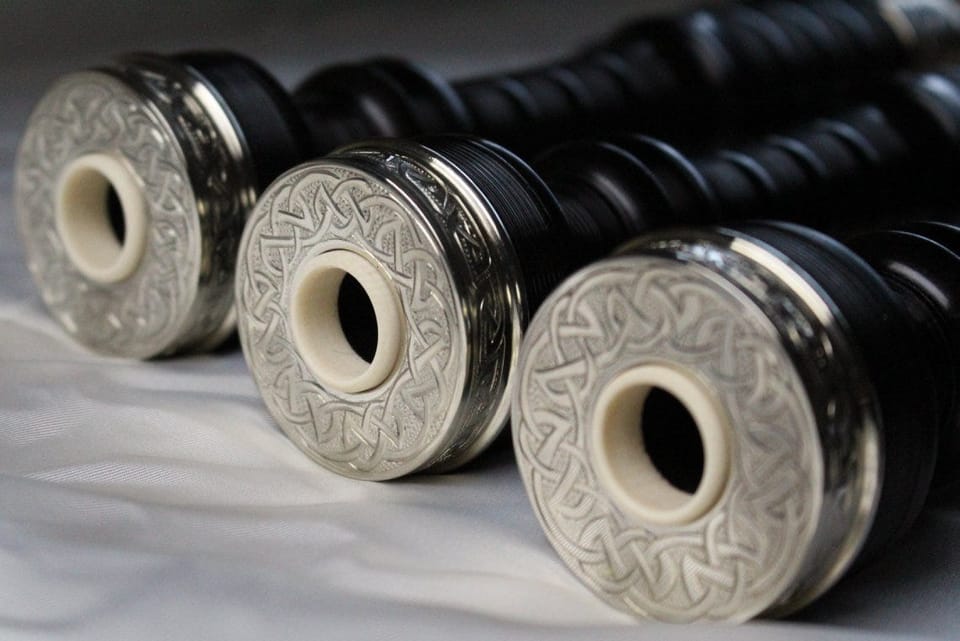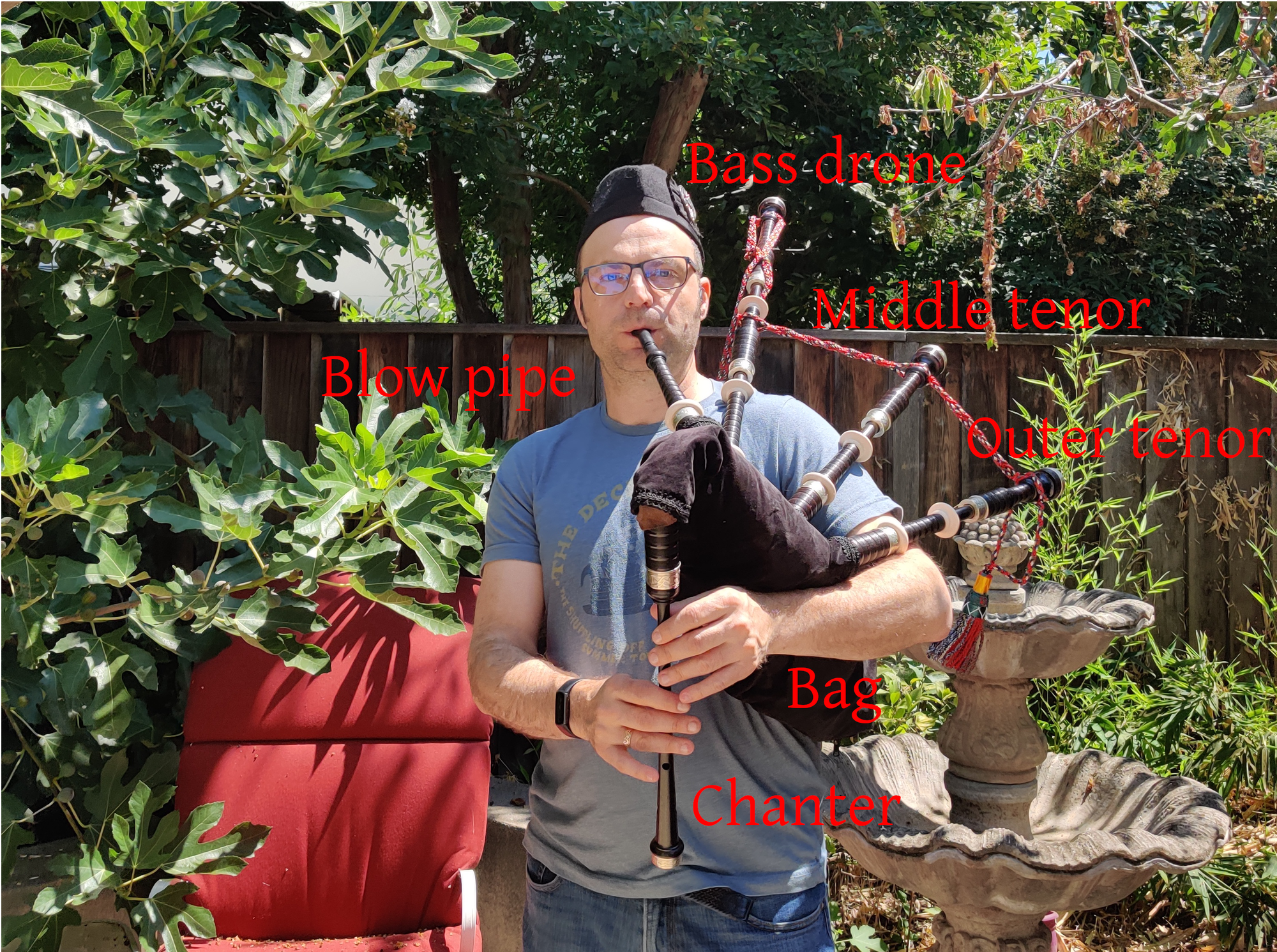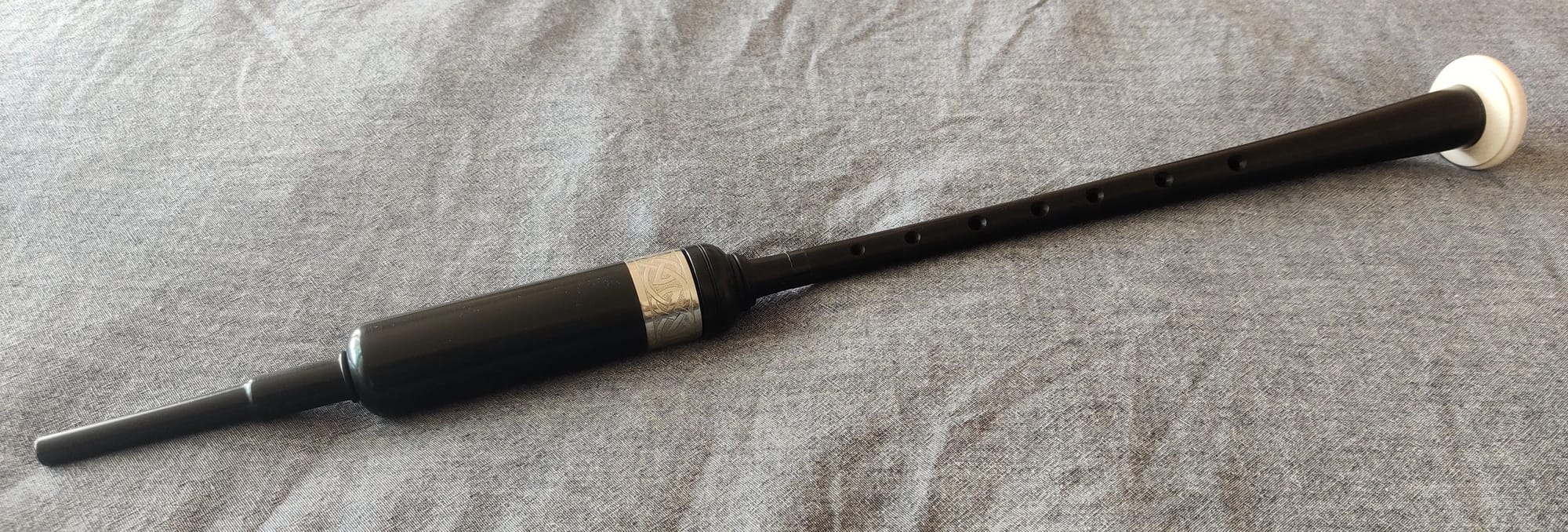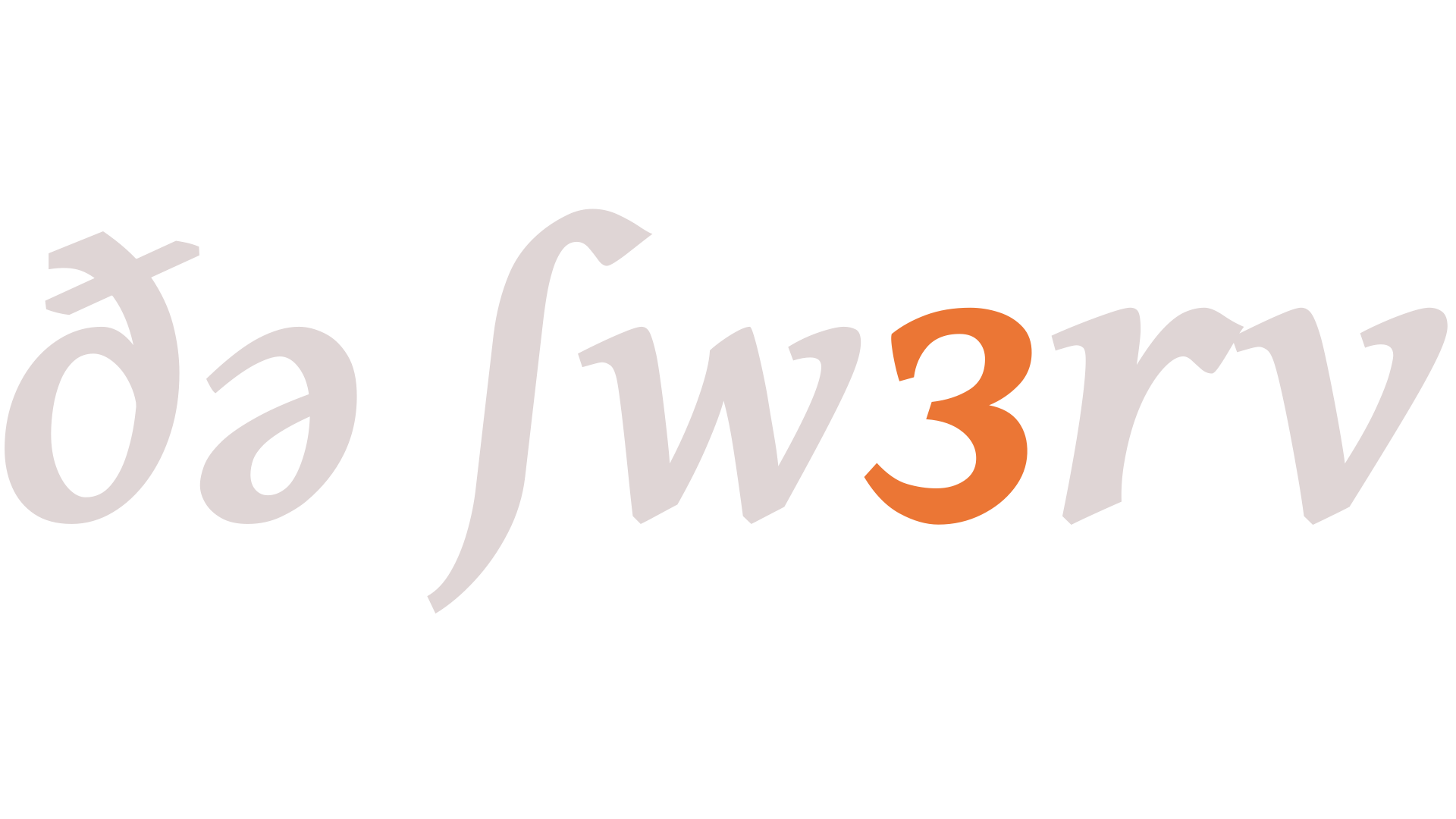Bagpipes

In November of 2016, I came to necessary conclusion that I would to learn how to play the bagpipes. I’ll leave it as an exercise to the reader as to what might have inspired my new-found desire to play a loud, out-of-tune instrument that drowns out all thought and reason.
And loud they are! When practicing in the park, I have been asked where the amplifier is. They achieve over 100 decibels all on their own—that’s helicopter range for reference. I’ve been asked to turn down their volume. Alas, dear reader, all bagpipes have two volumes, on and off.
And boy are they out of tune! All music I’d grown up with—and you most likely as well—is tuned to what’s called Concert A—that is, the note A4 is tuned to 440 Hz, and the twelve other notes in the chromatic scale are logarithmic ratios of that pitch.
But not bagpipes. They eschew 440 Hz. They are much sharper, tuning A4 as high as 490 Hz sometimes, which to concert tuning is a like a slightly flat B4. For the record, my bagpipes are tuned to 480 Hz.
The bagpipes only have nine notes, and they’re a Mixolydian scale at that—not even a proper Ionian scale (Ionian is the “Doe-Ray-Me” song from The Sound of Music). Most songs you’re familiar with are probably Ionian—except “Low Rider” which is Mixolydian, go figure.
Also, they are fixed to one key, D major—or A Mixolydian for you music nerds (i.e. my people).
This is why you don’t often hear pop songs played on the pipes. Transposition is necessary, and sometimes notes have to be fudged. While it is possible to play a few more than the official nine notes, it’s not done very often, and it depends on whether your reed and chanter can handle it.
The parts

I just mentioned the chanter. This is the part the piper holds with both hands that has finger holes. Covering or uncovering combinations of its eight holes changes which note is being played.
There are three drones. These are the long pipes slung over the left shoulder of the piper. The two smaller drones are tuned to the same note, A3, or one octave below the lowest A on the chanter. The longest one is tuned to A2. These drones play those two notes, and nothing else.
There is the blowpipe as well, which is used to keep the bag full of air.
The chanter and drones each have their own reed (not shown).
When under sufficient pressure from blowing into the bag and squeezing the bag between one’s left arm and rib cage, the blades of the reeds begin to vibrate. The piper then deftly moves their fingers on the chanter simultaneously. With any skill—and A LOT of luck—music might be heard.
The technique
If only it were as simple as a bag, some pressure, and some fingerings, but it’s not.

Practice occurs on the practice chanter, or PC for short. This is a quieter instrument with the same fingering as the bagpipes but requires far less air. I got my first practice chanter early 2017 while I wouldn’t get my bagpipes until summer 2018.
Most pipers learn their tunes on their PC before graduating to the pipes.
Since there are only nine notes and one volume, there is no such thing as a rest in a bagpipe tune. To achieve a musical "gap” between notes, pipers use flourishes that are quick movements of the fingers. The simplest one, a G grace note, is achieved by rapidly raising and lowering one’s G finger on the chanter—that’s the pointer finger on the top hand.
Once a tune has been memorized, it’s time to practice it on the bagpipes. For snobbery reasons, reading music while playing the pipes is severely frowned upon, so to avoid looks of disdain from other pipers, it’s best to have the tune memorized before firing up the pipes.
Since the feel of the chanter is different from the PC, there’s now a bag under my arm, and the amount of air I’m pushing into the bag is much greater than the gentle steady blowing of the PC, the first time on the pipes is always a disaster for me.
Ergo, snobs can get bent. I memorize a tune twice, once on the PC, then a second time with sheet music on the pipes.
Practicing
At first, I tried learning on my own. That didn’t work well, so I found a local pipe band that offered irregular free lessons. I eventually upgraded to paid lessons, but while they are excellent pipers, teaching is not their forte. At the start of the pandemic, I switched to back self-paced. I got a real teacher in 2021, taking Zoom lessons. She is an outstanding musician as well.
It wasn’t until the summer of 2022 that my major problem with my pipes was solved. I was only able to learn this because I attended bagpipe summer camp in San Diego. (As of writing this, the class photo on the page is the year I attended.)
Once practicing again with in-person teachers, it was quickly determined that the reed in my chanter was too hard. Like, ridiculously hard. Like, playing “Cuphead” on expert mode hard.
Prior to this discovery, most pipers whom I had worked with had simply said to keep at it, blow harder, build your stamina up, etc. None of this advice was correct. Once the hardness of my reed was fixed, playing the pipes went from being challenging, frustrating, and painful to joyful, musical, and exhilarating.
(My online instructor was appalled that no one diagnosed this prior. Since she was remote, she couldn’t do that, but it should have been trivial for any experienced piper to quickly suss out)
Playing
So, you might be asking (you’re probably not), how is it going? It’s been almost seven years since I first got this bee in my bonnet.
I’m getting better.
I’m learning a lot.
I’m having fun.
My favorite thing now is to expand my spooky Halloween repertoire of tunes. Last Halloween I had two. I’m adding a third this year. I post some of the least bad videos of me performing to my TikTok channel, where my username is Ūtriculārius, which is the Latin word for bagpiper—yes, the ancient Romans had bagpipes, and Emperor Nero was allegedly a proficient player.

